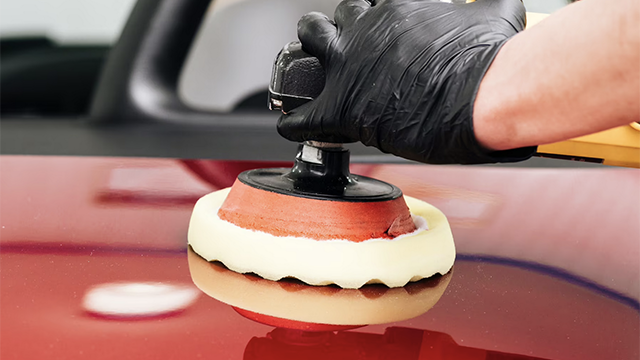Introduction: A buffer polisher is a versatile tool used in various industries, including automotive detailing, woodworking, and metalworking. It is designed to restore the shine and luster of surfaces by removing imperfections, scratches, and swirl marks. If you’re a beginner looking to learn how to operate a buffer polisher effectively and safely, this guide is here to help. By following these steps and best practices, you’ll be well on your way to achieving professional-grade results.
Step 1: Familiarize Yourself with the Equipment
Before operating a buffer polisher, it’s important to understand its components. A typical buffer polisher consists of a motor, a handle or grip, an on/off switch, and a rotating pad or disc. Take the time to read the user manual provided by the manufacturer, which will outline specific details and safety precautions unique to your polisher model.
Step 2: Gather the Necessary Supplies
Ensure you have all the necessary supplies before you begin. These typically include a buffer polisher, appropriate polishing pads, polishing compounds, a clean microfiber cloth, and any personal protective equipment (PPE) required, such as safety goggles and gloves.
Step 3: Prepare the Work Area
Choose a well-ventilated and well-lit area for your polishing work. Clear the space of any obstacles, debris, or loose objects that could interfere with the polishing process. Cover nearby surfaces or objects that you want to protect from polishing compound splatter.
Step 4: Preparing the Surface
Thoroughly clean the surface you intend to polish to remove dirt, dust, and grime. Use a mild detergent or dedicated surface cleaner, followed by a rinse and drying step. Make sure the surface is completely dry before proceeding.
Step 5: Selecting the Right Polishing Pad and Compound
Different surfaces and imperfections require different types of polishing pads and compounds. Consult the manufacturer’s recommendations or seek advice from experienced users or professionals to determine the appropriate combination for your specific application.
Step 6: Applying the Polishing Compound
Apply a small amount of polishing compound to the surface or directly onto the polishing pad. Spread the compound evenly across the working area to ensure consistent coverage. Be cautious not to use too much compound, as it may splatter during operation.
Step 7: Operating the Buffer Polisher
Hold the buffer polisher firmly using both hands, ensuring a comfortable and secure grip. Switch on the buffer polisher and gradually increase the speed to the desired level, following the manufacturer’s instructions. Begin polishing by applying light pressure and moving the buffer polisher in smooth, overlapping passes.
Step 8: Maintaining Proper Technique
Maintain a consistent speed and avoid excessive pressure, as this can lead to uneven results or damage the surface. Keep the buffer polisher moving at all times to prevent heat buildup and burn marks. Pay attention to the condition of the pad and compound, and reapply as needed.
Step 9: Finishing the Polishing Process
Once you have achieved the desired results, switch off the buffer polisher and allow the pad to come to a complete stop before setting it down. Wipe away any excess compound using a clean microfiber cloth, and inspect the surface for any remaining imperfections.
Step 10: Clean Up and Maintenance
Clean the polishing pads thoroughly after each use to remove any compound residue. Follow the manufacturer’s instructions for pad maintenance and storage. Clean the buffer polisher, ensuring it is unplugged, and store it in a safe and dry place.
Conclusion: Operating a buffer polisher may seem daunting at first, but with proper knowledge and practice, you can achieve excellent results. Remember to prioritize safety, choose the right supplies, and follow the manufacturer’s instructions. By mastering the techniques outlined in this beginner’s guide, you’ll be well on your way to transforming dull surfaces into stunning ones with the help of a buffer polisher. Happy polishing! Check out our website for special deals.



